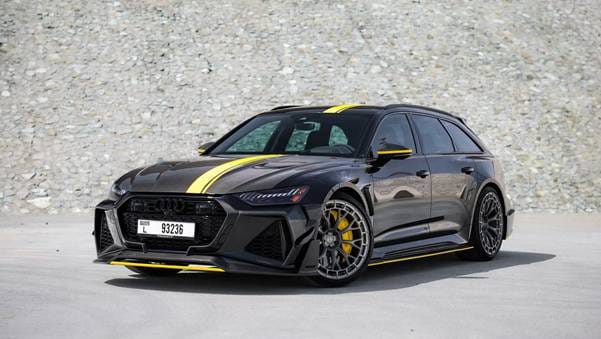The tourist trail of Dubai encompasses maybe five percent of what the city has to offer. Burj Khalifa, Dubai Mall, Jumeirah Beach — these are the places noted in every guide and on every Instagram feed. Thousands of visitors look at exactly the same sights, dine in the same restaurants, shoot exactly the same pictures. Meanwhile, the residents lead completely different lives in neighborhoods tourists never set foot in; hidden areas that actually show the character of the city, where people build up routines and relationships beyond the tourist spectacle.
For this, mobility is required, and one must be willing to explore beyond metro stops. Using RS6 Mansory rent Dubai opens access to those districts that public transport doesn’t reach. Performance and comfort mean something when you have to spend days driving between scattered neighborhoods. Locals don’t cluster life conveniences around tourists. The best coffee shop might be in Jumeirah, the most interesting gallery in Al Quoz, and the perfect sunset spot in Al Qudra. These distances can’t be covered comfortably without a proper vehicle.

Al Quoz Industrial Area Transformed
A drive through Al Quoz’s warehouse district baffles the first-timers. Auto repair shops, furniture warehouses, and industrial suppliers line the streets. Then, a small sign points to an art gallery between the mechanic shops. Inside, white-walled spaces are filled with contemporary Middle Eastern art. The pattern repeats throughout the area: creativity inside industrial shells.
Alserkal Avenue became the obvious cultural hub, but dozens of independent galleries and studios operate in surrounding blocks. Artists rent these warehouse spaces cheaply, converting them into studios and exhibition areas. On weekend afternoons, locals navigate industrial streets to attend openings, buy directly from artists, and discuss work over coffee in makeshift cafes inside former storage rooms.
The food scene here skipped the polished restaurant phase. Small eateries operate from repurposed warehouses serving cuisines that reflect Dubai’s actual demographics: Pakistani truck drivers break bread alongside Emirati artists and European designers. Nobody dresses up. The food is real rather than instagrammable. A proper biryani place run by a family from Hyderabad operates from a space that seats twelve people maximum.
Hatta’s Mountain Reality
Tourist Hatta has a Heritage Village, the Hatta Dam, and some mountain biking trails. Local Hatta has weekly vegetable markets, residential areas where Emirati families have lived for generations, and mountain roads leading to villages tourists never reach. The difference matters because tourist Hatta gets crowded on weekends, while local Hatta stays quiet and authentic.
On Friday mornings, residents drive to small farms in the mountains surrounding Hatta. The farms sell produce directly — dates, honey, vegetables grown in mountain microclimates. No fancy packaging or tourist pricing. Just farmers and their regular customers doing business the same way they have for decades. The mountain roads leading to these farms offer better scenery than the official tourist viewpoints.
Indeed, the pools and wadis visited by the residents differ from touristed ones. Hiking or driving along rough tracks is required to get there. No facilities, no crowds, just natural mountain water and rock formations. Families pack picnics and spend entire days in these spots. Underground springs feed the water, which remains cold even during the height of summer. These spots feature on no maps but are communicated by local knowledge, not via Google reviews.
Practical ways of finding local spots
Tourism guides won’t tell you where locals really hang out. These approaches are more effective at uncovering genuine locations:
- Follow restaurant lines at odd hours. Locals eat at specific times, namely early dinners around 6 pm before evening activities, late meals after 10pm. If a place has lines during these windows, residents trust it.
- Go out and observe where families with children hang out. Parks, some beaches, areas of malls. Families seek out easy, safe, inexpensive locations, making for authentic neighborhood places, not tourist traps.
- Ask service workers for recommendations: hotel staff, drivers, shop employees know their city from a resident’s perspective. They eat at good, affordable restaurants and know parks where locals go to relax.
- Head to areas around big residential compounds. Such neighborhoods gradually build up service infrastructure for their residents: food stores with international products, casual restaurants, coffee shops with space to work.
- Drive through neighborhoods on Friday mornings: see where residents shop at markets, which mosques draw crowds, where community life actually happens away from tourist zones.
Check social media for accounts of Emiratis and long-term expats. Don’t look at influencer pages. Find people just sharing their real lives. Their posts reveal real spots that matter to communities.
What premium mobility enables
Budget car rentals get tourists between major landmarks. Proper vehicles enable the kind of exploration that reveals hidden Dubai. Comfort is a factor on long days of covering scattered locations, and performance is a factor when driving on desert tracks or mountain roads. The right vehicle changes what exploration is possible.
A performance vehicle like the RS6 Mansory handles highway driving between distant neighborhoods and the rough tracks leading to remote desert and mountain spots. The comfort means a full day of exploration doesn’t exhaust passengers. The presence means parking at upscale local spots without standing out. These factors combine to enable comprehensive exploration to reveal where residents actually spend time.
Jumeirah’s Secret Beach Accesses
Everyone knows Kite Beach and JBR. Few tourists discover the small beach accesses in between them. Small residential streets throughout Jumeirah 1, 2, and 3 have parking areas leading down to quieter sections of beach. These spots offer no facilities — no loungers or cafes — just sand and water, and far fewer people. Residents bring their own chairs and coolers, setting up for hours without crowds.
Certain sections attract specific groups: one area draws in the morning swimming group, mainly older expats swimming lengths parallel to the shore; another becomes an evening family spot where children play while parents socialize. Kite surfers have their preferred launch points away from the crowds of the official kite beach. Such informal patterns create community spaces within public beaches.
Why these places stay hidden
Residents don’t actively gatekeep these places; they’re just not found in tourist contexts. No marketing of warehouse galleries or desert picnic spots exists. These are for the communities that use them, not as natural attractions. Part of their value is that they remain uncommercialized and uncrowded.
When these places are uncovered by tourist groups, dynamics change. Prices go up, crowds set in, and the character that made them distinctive disappears. Locals move elsewhere, beginning the process anew. That’s why the most authentically local places remain hidden-always will stay hidden-because those who appreciate them don’t publicize them as a means of preserving what makes them function.
It requires an effort to find these places, but also a respectful approach. Come with humility, not tourist entitlement. Don’t expect English menus or picture presentations. Remember that you’re coming into spaces built for those who live here, not for visitors. The payback is glimpsing a Dubai that locals know, but tourists rarely experience.





